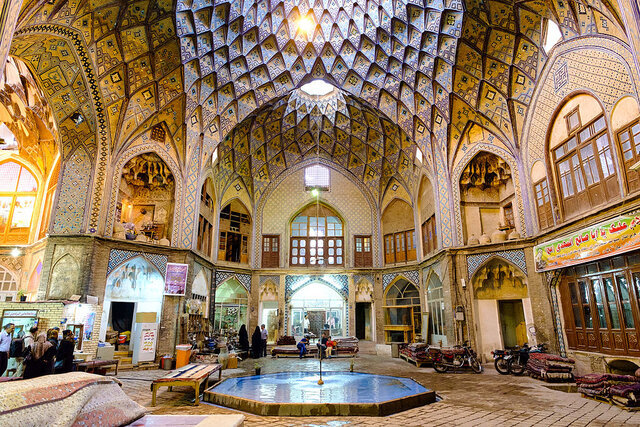INSUBCONTINENT EXCLUSIVE:
TEHRAN-- The historic fair of Kashan, a sanctuary city in Iran's Isfahan province, has actually played a major function in keeping
traditional textiles alive through history, a handicrafts specialist has said.The fete, going back to Seljuk-era (1037-- 1194), has actually
served as a center for merchants throughout its history, along with a center for the supply of textile products and raw materials, ISNA
estimated Morteza Ahmadi Nejat as stating on Sunday.It likewise has actually played a huge role in the survival of traditional fabrics, he
added.Nowadays, domestic and foreign tourists purchase fabric products from fabric shops and raw material production workshops in the fete,
suggesting the restored dynamism of standard fabrics, he noted.The city has nearly 1,000 craftsmens practicing 70 different handmades,
making it qualified for UNESCOs classification as a world city of conventional fabrics, he mentioned.While most of the fairs covered
structures and markets are associated with the 19th century onwards, the history of sell the fete dates almost 800 years.Two main streets
lead through the marketplace, one known as the Main Line, and the other as the Copper Line, which measures up to its name for at least part
Theres likewise a wealth of caravanserais, mosques, madrasas, and hammams (public bathhouses) to explore.Chief among the attractions is the
great Amin al-Dowleh Timcheh, a caravanserai with a soaring, perfectly decorated dome
Dating from 1868, the caravanserai is home to carpet sellers and the odd interest shop.The bazaar likewise consists of the 19th-century
Hammam-e Khan, the Seljuk-era Soltani Mosque, and the 800-year-old Mir Emad Mosque.Many travelers choose to bypass Kashan on their journeys
between Tehran, Isfahan, and Yazd, but this delightful oasis city on the edge of the Dasht-e Kavir is one of Iran's many appealing locations
The city not only boasts a cluster of architectural wonders and a UNESCO-recognized garden, however it likewise provides a few of main
Iran's finest traditional hotels.During the Seljuk duration (1051-- 1220) Kashan became famous for its fabrics, pottery and tiles, reaching
high levels of accomplishment in each of these cottage industries
Today it is more widely called a significant center for the production of increased water, which is sold at outlets around the main tourist
destinations and devoted shops in the bazaar.ABU/ AM

